Charleston Currents #11.34 | July 8, 2019
FIRECRACKER LILY. Take a look at this bright red daylily snapped recently in metro Atlanta. If this doesn’t remind you of nature’s version of a Fourth of July explosion, what will?
FOCUS, Palm: Much more work needed on flood-prone areas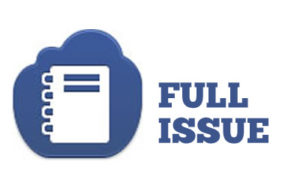
COMMENTARY, Brack: February primary is still a long way away
IN THE SPOTLIGHT: Morris Financial Concepts, Inc.
PALMETTO POEM: Lady in White, by John L. Byrne
GOOD NEWS: 500 years of Chicora Cherokee history in 50 feet
FEEDBACK: Send us your letters
MYSTERY PHOTO: Big old pot
S.C. ENCYCLOPEDIA: Mexican War and South Carolina
CALENDAR: Podcasters to offer live show at Gaillard Center
FOCUS, Palm: Much more work needed on flood-prone areas
By Fred Palm, contributing editor | The City of Charleston is required to identify severely flood-damaged properties so that if the damage is extensive, the properties are removed from the floodplain and, if not, they are brought up to a higher level of resilience to better survive the next flood event.
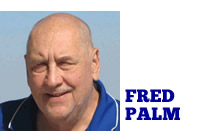 This is a long-term, common-sense strategy to correct past planning and building decisions that did not work with increases in flood events and to lessen the replacement cost borne by all taxpayers. This also is a “common good” policy offering transition. Carried out over decades, owners are to be compensated for their losses, at-risk housing is removed from the floodplain, and we get to live in a more resilient community.
This is a long-term, common-sense strategy to correct past planning and building decisions that did not work with increases in flood events and to lessen the replacement cost borne by all taxpayers. This also is a “common good” policy offering transition. Carried out over decades, owners are to be compensated for their losses, at-risk housing is removed from the floodplain, and we get to live in a more resilient community.
Unfortunately, the sensible policy is not being done well enough and treated more on a par with sloppy housekeeping by the city. The spokesperson says, “The city acknowledges, and officials say they are re-evaluating their previous findings. It’s unclear how long it will take to retrace those past missteps and find these flood-prone homes.”
Translated: We will get to it when we get to it — and the tipoff is that this is going to be a long story.
Private-sector data services sell insurance companies and other municipal investors estimates of asset losses (including people and families) using satellite imaging, land typology measures and atmospheric data to show where high water will go under different scenarios of sea surge, downpours and river-stream-creek flooding. This is how insurance companies calculate their future flood risks to minimize losses for their investors. We should do the same for the taxpayers but do not. It is possible to go back and draw a ring on the map to say where to look for the recent flood damage.
Ray Farmer, South Carolina’s state insurance director, is also ringing another five-alarm bell. In recent days, he said we have way too little flood insurance here. Communities rebuild with the proceeds of flood insurance payouts and that is why having a high-level of in-place flood insurance is important and of great concern.
The Charleston area reportedly has the highest concentration of assets and people in South Carolina having a low level of in-force flood insurance. This represents a huge financial risk to individual municipal cities and towns, counties as a whole and the state. It is not being addressed.
We can all understand being uprooted by too much water coming at us from three directions — up, down and sideways — is traumatic, disruptive and hurtful. Carrying on in place and rebuilding is what we say and is spoken in most disasters.
The driver for the owners of flood-damaged properties is obvious. Flooded properties are valued less, those in proximity also have their values decline and thus all have an interest in not making noise about the lack of flood protection. The goal of nondisclosure is to keep the existing market values. Keeping quiet is the method. The flood data maps at this link shows valuation declines spread across a wide area far from the impacted flooded properties. Some studies estimate flood-risk properties are valued at about 7 percent less than those not at risk for flooding..
In the case of local governments, declines in valuation lead to two undesirable outcomes: declining tax revenues and shifting the tax revenue shortfall onto remaining taxpayers through the obtuse millage computations to finance the existing general fund and infrastructure budget.
Since Hurricane Hugo struck, we have much more to lose the next time and need to protect this inheritance we love. Next time, the damage calculation will be much higher with too little in place to rebuild.
Pure and simple, we should develop an effective flood protection plan to protect our residents, lessen the water damage, counter flood insurance premium increases and innovate the coverage provisions that includes identification of the damaged properties that we cannot find.
Fred Palm of Edisto Island is a retired professor of oversight and investigations at the John Jay College School of Public Management and a former executive director of the Association of Inspectors General. He writes about the Common Good.
- Have a comment? Send to: editor@charlestoncurrents.com
BRACK: February primary still is a long way away
By Andy Brack, editor and publisher | An Australian journalist phoned the other day wanting a South Carolina take on the two recent Democratic presidential debates.
 “Didn’t watch the debates,” I said. “It’s all a little bit too early. There are eight months before the primary on Feb. 29, 2020. There’s more than enough time to make an informed choice.”
“Didn’t watch the debates,” I said. “It’s all a little bit too early. There are eight months before the primary on Feb. 29, 2020. There’s more than enough time to make an informed choice.”
Unfortunately, sensibly comparing candidates isn’t what’s driving most national media these days. Instead, most reporters are now locked in hyper-coverage mode for the foreseeable future. Just about anything in the news is being scrutinized through the lens of presidential politics. Likely translation: Nothing much nationally will get done between now and next November because everybody in Washington and on the campaign trail will be squabbling with each other.
Wouldn’t it be great if the entire campaign season could be done in a month or two like in countries that hold parliamentary elections? Then perhaps leaders could get on with the business of trying to figure ways out of the various messes in which the country finds itself.
 So for now, look for South Carolina to continue to be in the media glare as Democratic presidential candidates duke it out to get noticed. Here are some reactions to what we’ve seen so far:
So for now, look for South Carolina to continue to be in the media glare as Democratic presidential candidates duke it out to get noticed. Here are some reactions to what we’ve seen so far:
Joe Biden: The former vice president remains on top of the pack, despite incurring damage during a debate when U.S. Sen. Kamala Harris, D-Calif., decried how he worked decades ago with Southern senators known for being segregationists. He’ll get his juju back. And if he doesn’t, someone else will be the Democratic nominee.
Harris: Seen as a sharp, focused candidate with the precision of the prosecutor she was, Harris is riding high now. But the extra attention will draw the ire of President Trump, who will start withering criticism to punch her down. With eight months to go, she’ll sometime soon face the same kind of media descent that she just inflicted on Biden.
Bernie Sanders: He’s got a lot of loyal followers, but more people seem to be wondering whether he’s too old and why he’s running as a Democrat when he’s not one. He’ll hang in there, but he’s getting served now by …
Elizabeth Warren: The Massachusetts senator is on the rise as the candidate pushing practical ideas that can help all Americans, not just a few. Her insistent rollout of new policy positions is impacting the race and making other candidates be more precise about their visions for America. Another thing she’s got going for her among many Democrats: Trump really dislikes her and is probably threatened by her candidacy.
Pete Buttigieg: The South Bend mayor, whose rising star has been tarnished somewhat after a shooting in his Indiana city, may be the smartest candidate in the Democratic field. He’s raked in piles of money, which will allow his smart, engaging campaign to continue to be smart and engaging. Don’t write him off. (If he ended up being a vice presidential nominee, we can imagine the debate between him and his fellow Indianan, Mike Pence.)
Cory Booker: With a strong South Carolina organization, Booker knows he’s got to do well in the Palmetto State to be a national contender. There’s likely to be a breakout moment in the fall so keep an eye on what he’s talking about here. His challenge: To take his urban experience from New Jersey and have it translate in the suburbs and rural areas.
There are other Democratic contenders who offer promise. Former Texas Congressman Beto O’Rourke still seems to have rock star status, particularly among young voters. But they don’t vote in large numbers. Minnesota Sen. Amy Klobuchar may appeal to Midwestern voters, but she may not break out early because of the way primaries and caucuses occur. New York Sen. Kirsten Gillibrand has a feistiness that’s not getting much notice now, but that could change.
It’s still a long way until February 2020. There’s time for candidate waxing and waning. And there’s more than enough time for Trump or the Russians to do something that no one expects — and that may cause the ox of more than one candidate to run into a political ditch.
Andy Brack’s new book, “We Can Do Better, South Carolina,” is now available for $14.99 in paperback via Amazon.
- Have a comment? Send to: editor@charlestoncurrents.com
SPOTLIGHT: Morris Financial Concepts, Inc.
 The public spiritedness of our sponsors allows us to bring Charleston Currents to you at no cost to readers. Morris Financial Concepts, Inc., is a nationally recognized, fee-only financial consulting firm that helps you identify and align your resources, values and goals to achieve an enriched life.
The public spiritedness of our sponsors allows us to bring Charleston Currents to you at no cost to readers. Morris Financial Concepts, Inc., is a nationally recognized, fee-only financial consulting firm that helps you identify and align your resources, values and goals to achieve an enriched life.
We do not accept commissions or compensation related to the products and services we recommend. Our counsel is based solely on what we believe is best for each client.
- Learn about founder and Charleston Currents columnist Kyra Morris and more about the consultancy at: Morris Financial Concepts, Inc.
- To meet all of our underwriters, click here.
Lady in White

Image credit: Lady in a white dress, Franz Dvorak, 1927.
By John L. Byrne
![]() The moon and lightning bugs dance
The moon and lightning bugs dance
between tombstones. Leaves wrinkle
in the sighing Charleston breeze.
A lady, draped in white, drifts
just beyond the gate, in search of love
or someone to light her ghostly cigarette,
somewhere between the fresh graves
and the old; between our world and the dead.
She floats, lingers far above the steeples,
the streetlamps. Can the breathing sea
sense her longing, here where it opens up?
Where the mouths of the Cooper and the Ashley
rivers kiss, out in the harbor, where they spread
wide into endless surging water? Oh, to be tethered
for eternity to a timeless place! To be one of countless
souls latched to a filled-in land mass, long enough
and loudly enough to be given a name
Nebraska native John L. Byrne is a writer in Charleston who received a master’s degree of fine arts in poetry from the College of Charleston. He currently works as a manager at Buxton Books. His work can be found in Roanoke Review and pamplemousse magazine.
- Have a comment? Send to: editor@charlestoncurrents.com
500 years of Chicora Cherokee history in 50 feet
Staff reports | Fresh Future Farm (FFF) has used money from a grant to create a public mural that showcases images over centuries of the Chicora Cherokee neighborhood in North Charleston where it is located. The project seeks to use art at the community hub to educate, boost community conversation and increase pride.
The grant from South Arts led the staff to work with historians to verify and uncover little-known historic information. According to a press release, Anik Hall, the farm’s 23-year-old special projects manager, collaged images of the neighborhood from the 1500s to the present. Then last spring, Comcast employees prepped the space for the. Hall translated the collage mock-up into a 50-foot by 12-foot replica on the back wall of Fresh Future Farm’s grocery store.
Staff members then started recording oral histories using the StoryCorps app. To complement its work, FFF was awarded a fellowship from the League of Creative Interventionists, a national organization invested in building a network of artists doing creative placemaking work.
The Farm plans to host a community dinner that celebrates the mural’s completion and expands their oral histories project to include additional narratives from current and former residents later this year. These videos will be recorded for FFF’s YouTube channel and future podcast.
As part of Fresh Future Farm’s Kickstarter capital campaign to purchase its land, donors can pay to have their names added to the mural. To view the public artwork, visit Fresh Future Farm Tuesdays through Fridays from noon to 7 p.m. and Saturdays from 7 a.m. to noon. More info and location.
In other Good News:
Top lakes. The Santee Cooper lakes — Lake Marion and Lake Moultrie — have been named the ninth best bass fishing lakes in the country, according to Bassmaster magazine. In the Southeast, the lakes were the third best bass fishery, behind Alabama’s Lake Guntersville and Tennessee’s Chickamauga Lake. More. Bassmaster.com.
Immigration debate hits home. Protesters in Charleston are calling on U.S. Sen. Lindsey Graham, R-S.C., to demand closure of child detention centers in the news for having squalid conditions, according to WCSC. The Charleston protest was part of a national day of action to close camps. Highlighting how the issue might become part of the 2020 election in which Graham is running for another six-year term, protesters carried signs that said, “We will remember this in 2020.”
Harrison shows mettle. One of Graham’s Democratic opponents, Orangeburg nativeJaime Harrison, raked in more than $1.5 million in second-quarter donations, surprising many political observers. The large cash haul highlights how Graham may be more vulnerable among a General Election electorate than previously thought. But to take on Graham, Harrison first has to beat Georgetown County native Gloria Bromell Tinubu, an educator and economist.
Send us your thoughts
We’d love to get your impact in one or more ways:
Send us a letter: We love hearing from readers. Comments are limited to 250 words or less. Please include your name and contact information. Send your letters to: editor@charlestoncurrents.com. | Read our feedback policy.
Tell us what you love about the Lowcountry. Send a short comment – 100 words to 150 words – that describes something you really enjoy about the Lowcountry. It can be big or small. It can be a place, a thing or something you see. It might the bakery where you get a morning croissant or a business or government entity doing a good job. We’ll highlight your entry in a coming issue of Charleston Currents. We look forward to hearing from you.
Big old pot
Here’s a big old pot sitting in a museum somewhere in the South. First, what is this pot and why might it be important? Second — for a bonus — where is this pot today? Send your guess to editor@charlestoncurrents.com. And don’t forget to include your name and the town in which you live.
Our previous Mystery Photo
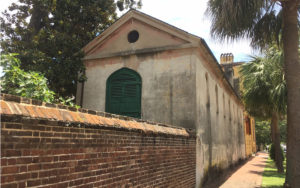 Our July 1 mystery, “Different view of Charleston site, offered a view of outbuildings form the Aiken-Rhett House along Elizabeth Street in Charleston.
Our July 1 mystery, “Different view of Charleston site, offered a view of outbuildings form the Aiken-Rhett House along Elizabeth Street in Charleston.
Congratulations to several readers who send in the correct answer: Chris Brooks of Mount Pleasant; Stephen Yetman and David Savard of Charleston; Deborah Getter of Johns Island; George Graf of Palmyra, Va.; and Marnie Huger of Richmond, Va.
By coincidence, on the same morning that we snapped the photo, The New York Times published this article that outlined how some historic sites, such as the Aiken-Rhett House, now includes the perspectives of how enslaved people lived in these houses.
Graf provided more interesting context, according to TheTruthinHistoryInitiative.wordpress.com:
“William Aiken Jr. was an incredible businessman and politician in his own right and he was eventually elected as the Governor of our great state. He too was an antebellum rice and cotton Planter who personally owned upwards of 700 fellow human beings. This number made him one of the largest individual slaveholders our nation has ever had.
“The perception that those who were enslaved were only labor is an utter myth that has been perpetuated by the Planters themselves and those that have descended from them. The fact is those who were enslaved were not only the workforce they were the brains. It is they who had the knowhow and technology behind Charleston’s three most important cash crops, rice, Indigo and cotton. Without their collective intellectual input the successful cultivation of those three commodities would never have occurred on the scale they did.
“The proof of that here is once these African Americans were ‘emancipated’ and largely removed from the free labor equation both our cotton and our rice industry failed. Those that have descended from the Planter Aristocracy offer up numerous other excuses as to why these industries failed including General Sherman scorched earth policy, federal corruption, hurricanes, the boll weevil, among many others.”
Send us a mystery: If you have a photo that you believe will stump readers, send it along (but make sure to tell us what it is because it may stump us too!) Send it along to editor@charlestoncurrents.com.
HISTORY: Mexican War and South Carolina
S.C. Encyclopedia | The roots of the Mexican War can be traced to westward expansion following the War of 1812. Many Americans, including many South Carolinians migrating west in search of cheap land, settled in northern Mexico where liberal land grants of as much as four thousand acres were available. These settlers established an agrarian economy based on slavery.
The 1836 revolt that led to the de facto independence of Texas set the stage for future conflict with Mexico. Texas statehood, supported by most South Carolinians, became mired in sectional controversy and was rejected in June 1844. However, in the 1844 presidential campaign James K. Polk ran on a platform of “recovering” lost territories, including Texas. Polk won, but before he was inaugurated, the out-going president, John Tyler, engineered a proposal for Texas statehood, which was accepted by Texas on July 4, 1845.
To “protect” our newest state, President Polk sent Zachary Taylor and nearly half the U.S. Army into Texas, raising tensions when he ordered Taylor into territory claimed by Mexico along the Rio Grande. Hostilities began on April 25, 1846, when Mexican forces ambushed a patrol led by Captain Seth B. Thornton. Polk quickly sought a declaration of war and money and men to reinforce Taylor.
In South Carolina public opinion on the war was mixed. John C. Calhoun fervently opposed the war, believing it posed a grave danger to southern political power, but he was placed in a difficult position by the coupling of the war declaration with provisions for supporting Taylor’s army. In the end he abstained from voting on the bill. The editor of the Charleston Mercury was highly critical of Polk and defended Calhoun’s position. Many other South Carolina newspapers criticized the administration’s position as well. On the other hand, the Abbeville Banner and the Greenville Mountaineer advocated stern measures, including invasion of Mexico. Taylor’s victories in northern Mexico muted the opposition. War fever swept the state.
When South Carolina was asked to provide a volunteer regiment, state adjutant general James W. Cantey ignored the fact that the regiment was for the reserve when he issued his guidelines on May 29. His optimistic deadline of June 10 was not met, and it was not until June 29 that ten companies were accepted for service. The news from Secretary of War William Marcy in July that the Palmettos were not needed was devastating.
In August 1846 the Wilmot Proviso, a failed attempt by Pennsylvania congressman David Wilmot to prohibit slavery in any territory acquired from Mexico, caused little reaction in South Carolina, and there was increasing public support for the war. Even the editor of the Mercury, while fulminating against northern warmongers, opposed withdrawing Taylor’s army from northern Mexico.
That autumn the administration’s optimistic view of the war collided with Mexico’s intransigence, and on November 16 South Carolina was asked to provide a regiment for immediate service. Because the term of service had changed from one year to the duration of the war, the Palmetto Regiment had to be reformed, and many refused to volunteer under the new provisions. In Greenville, for example, where two companies had been formed in June, only forty-two men volunteered and a company could not be formed. War fever had died down in the upstate and on the coast, and except for a company from Charleston, the Palmetto Regiment was raised exclusively in the Midlands.
As the Palmetto Regiment marched to war in 1847, the Wilmot Proviso was being roundly condemned in the South Carolina press. Calhoun, for example, feared that such abolitionist pressure would exacerbate sectional rivalry in the near future. Many agreed. Despite this debate, South Carolinians eagerly anticipated news of the war. Some in the Palmetto Regiment corresponded with their hometown newspapers, and their reports of the battles created intense interest in South Carolina. People wanted to know what “our boys” were doing.
When peace came in February 1848 there was a clamor for the return of the volunteers. The surviving Palmetto Regiment finally arrived at Mobile, Alabama, in late June 1848. There they were mustered out and left to find their own way home. The return of the Palmettos generated great excitement in South Carolina. Columbia and Charleston got into a heated debate over which city would “officially” welcome the regiment home. In the end there was a grand celebration in Columbia on July 26 and an equally grand one in Charleston two days later. However, by the end of the year the war with Mexico was all but forgotten.
— Excerpted from an entry by Jack Allen Meyer. his entry may not have been updated since 2006. To read more about this or 2,000 other entries about South Carolina, check out The South Carolina Encyclopedia, published in 2006 by USC Press. (Information used by permission.)
CALENDAR: Live show on July 18 of How Did This Get Made?
Staff reports | Have you ever seen a movie so bad that it’s good?
Podcasters Paul Scheer (The League, Black Monday), Jason Mantzoukas (The League, Brooklyn 99) and June Diane Raphael (Grace & Frankie, Long Shot) are experts in the best of the worst of cinema. They’ll host a live show, “How Did This Get Made — LIVE!,” at 7:30 p.m., July 18, at the Charleston Gaillard Center, 95 Calhoun St.
Live episodes of the trio’s podcast are a truly unique experience allowing the audience to participate through questions to the hosts, creating impromptu songs for segments and viewing one-of-a-kind clips. Tickets are $38 to $78.
Also ahead at the Gaillard Center:
Jennifer Holliday: 4 p.m. Aug. 2. The Grammy and Tony award-winning singer and actor, Jennifer Holliday, shows her amazing voice for a one-hour singing performance to close out the 2019 Lowcountry Mental Health Conference. She will also be taking time to share her personal story and struggles with depression while talking about the work she is doing to bring awareness to mental health issues. Tickets are $28.
Also on the calendar:
![]() Reggae Nights concert: 8 p.m., July 19, James Island County Park, James Island. Well Charged is the band featured for the third summer concert in the Reggae Nights series offered by the Charleston County Park and Recreation Commission. Gates open at 7:30 p.m. Originating from Charleston, SC, Well Charged was founded on a shared love for vintage reggae, rocksteady and ska music. With a style inspired by early pioneers of Caribbean music, such as Alton Ellis, Desmond Dekker and Prince Buster, Well Charged released their EP, Lift up Sessions, in October 2018. Food is available on site. Crafters and vendors will also be on site with souvenirs available for purchase. Advance tickets are not available, and admission is $10 per person at the gate. Gold Pass holders and kids 12 and under are free. Concerts will take place rain or shine.
Reggae Nights concert: 8 p.m., July 19, James Island County Park, James Island. Well Charged is the band featured for the third summer concert in the Reggae Nights series offered by the Charleston County Park and Recreation Commission. Gates open at 7:30 p.m. Originating from Charleston, SC, Well Charged was founded on a shared love for vintage reggae, rocksteady and ska music. With a style inspired by early pioneers of Caribbean music, such as Alton Ellis, Desmond Dekker and Prince Buster, Well Charged released their EP, Lift up Sessions, in October 2018. Food is available on site. Crafters and vendors will also be on site with souvenirs available for purchase. Advance tickets are not available, and admission is $10 per person at the gate. Gold Pass holders and kids 12 and under are free. Concerts will take place rain or shine.
Charleston Variety Show: 2 p.m. and 7 p.m., July 20, and 3 p.m., July 21, Charleston Music Hall, John St., Charleston. Longtime Charleston producers and entertainers Brad and Jennifer Moranz have gathered a talented cast of musicians, singers and dancers for an all-new show this summer. Featuring pop, rock and country favorites mixed with dancing and comedy skits, the Charleston Variety Show welcomes new performers and audience favorites. Tickets are $19 to $39. More: www.CharlestonMusicHall.com.
John’s Island Book Sale: Starts at 9 a.m. on July 26 and 27, John’s Island Regional Library, 3531 Maybank Highway, Johns Island. John the Charleston Friends of the Library to browse through more than 10,000 gently-used books, CDs, DVDs, and audio books at prices that can’t be beat.More info: www.CharlestonLibraryFriends.org.
Early morning bird walks at Caw Caw: 8:30 a.m. every Wednesday and Saturday, Caw Caw Interpretive Center, Ravenel. You can learn about habitats and birds, butterflies and other organisms in this two-hour session. Registration is not required, but participants are to be 15 and up. $10 per person or free to Gold Pass holders. More: http://www.CharlestonCountyParks.com.
AREA MARKETS
![]() TUESDAYS. The Mount Pleasant Farmers Market is every Tuesday from 3:30 p.m. to 7 p.m. at the market pavillion at Moultrie Middle School, 645 Coleman Blvd., Mount Pleasant. Free parking. Lots of activities. More info.
TUESDAYS. The Mount Pleasant Farmers Market is every Tuesday from 3:30 p.m. to 7 p.m. at the market pavillion at Moultrie Middle School, 645 Coleman Blvd., Mount Pleasant. Free parking. Lots of activities. More info.
WEDNESDAYS. The West Ashley Farmers Market is every Wednesday from 3 p.m. to 7 p.m. in Ackerman Park off Sycamore Avenue in West Ashley. The last week of the market will be the first week of October. More.
FRIDAYS/SATURDAYS: Night Market. Every Friday and Saturday from 6:30 p.m. to 10:30 p.m. for the rest of the year, you can shop with 108 vendors, including artists and craftsmen, at the night market on Market Street between East Bay and Church streets. It’s more than four blocks of local shopping and fun. Free.
SATURDAYS: Johns Island Farmers Market operates each Saturday from 9:30 a.m. to 1:30 p.m. year-round with more than 50 local farmers and vendors, food trucks, music and more. The market is located on the campus of Charleston Collegiate School, 2024 Academy Road, Johns Island
SATURDAYS: The Charleston Farmers Market is open 8 a.m. to 2 p.m. in Marion Square each Saturday through Nov. 30. More info.
- If you have an event to list on our calendar, please send it to feedback@charlestoncurrents.com for consideration. The calendar is updated weekly on Mondays.
If you like what you’ve been reading, how about considering a contribution so that we can continue to provide you with good news about Charleston and the Lowcountry. Interested? Just click the image below.
Now out in paperbrack, err, paperback
We Can Do Better, South Carolina! offers incisive commentaries by editor and publisher Andy Brack on the American South, the common good and interesting South Carolina leaders, such as former U.S. Sen. Fritz Hollings, civil rights advocate Septima Clark, former S.C. Gov. David Beasley and more. There also are discussions on civil rights struggles with which the Palmetto State continues to grapple. as well as commentaries on politics, governments, the hangovers of South Carolina’s past and her future opportunities.
We Can Do Better, South Carolina! is available for $14.99 in paperback or as a Kindle book for $7.99. Click here to purchase your copy. A paperback version will be ready for order isoon.
- If you have a comment or questions about the book, please let us know at: editor@charlestoncurrents.com
OUR UNDERWRITERS
Charleston Currents is an underwriter-supported weekly online journal of good news about the Charleston area and Lowcountry of South Carolina.
- Meet our underwriters
- To learn more about how your organization or business can benefit, click here to contact us. Or give us a holler on the phone at: 843.670.3996.
OUR TEAM
Charleston Currents offers insightful community comment and good news on events each week. It cuts through the information clutter to offer the best of what’s happening locally.
- Mailing address: P.O. Box. 22261 | Charleston, SC 29413
- Phone: 843.670.3996
Charleston Currents is provided to you weekly by:
- Editor and publisher: Andy Brack, 843.670.3996
- Contributing editor, common good, Fred Palm
- Contributing editor, money: Kyra Morris
- Contributing editor, Palmetto Poem: Marjory Wentworth
- Contributing editor, real estate: Digit Matheny
- Contributing editor, AT: Jerry Adams
- Contributing photographer: Rob Byko
SUBSCRIBE FOR FREE
Subscriptions to Charleston Currents are free.
- Click here to subscribe.
- Unsubscribe. We don’t want to lose you as a reader of Charleston Currents, but if you must unsubscribe, you will have to do it through the email edition you receive. Just go to the bottom of any of your weekly newsletters and click the “unsubscribe” function. If that doesn’t work, please send us an email with the word “unsubscribe” in the subject line.
- © 2008-2019, Statehouse Report, LLC. All rights reserved. Charleston Currents is published every Monday by Statehouse Report LLC, PO Box 22261, Charleston, SC 29413.


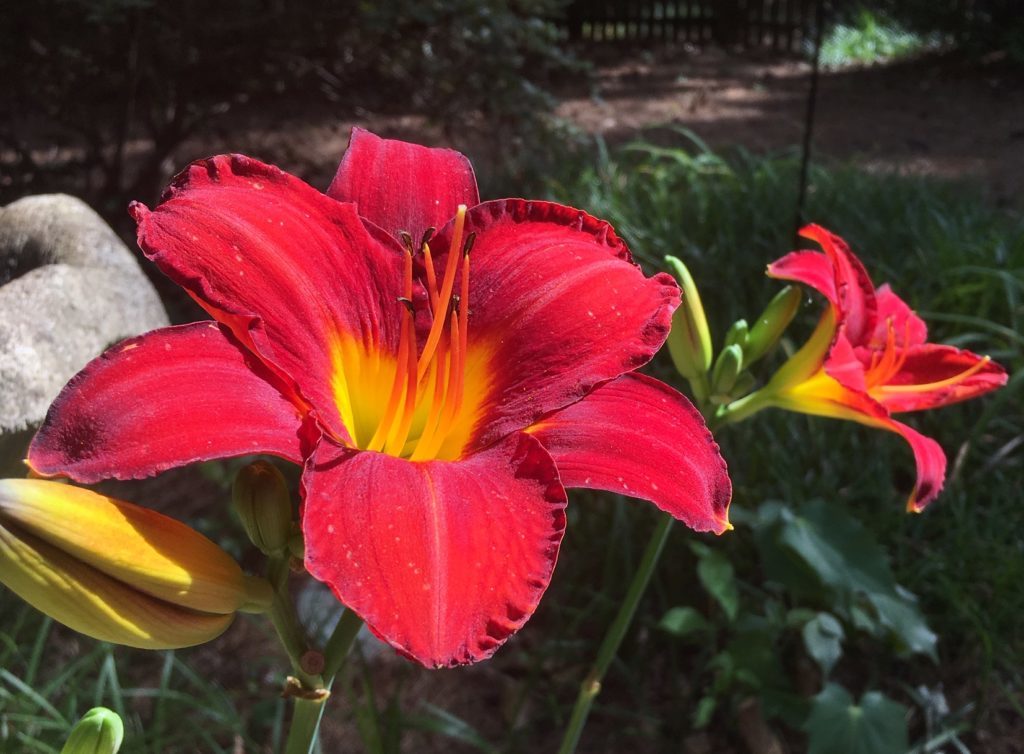
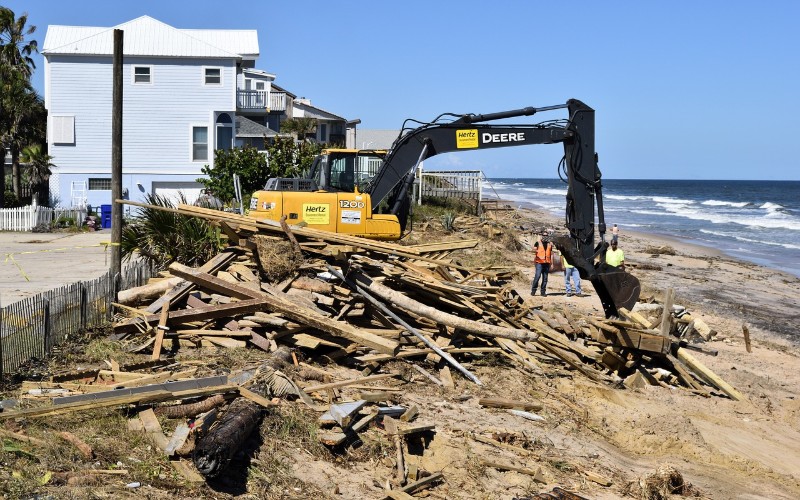

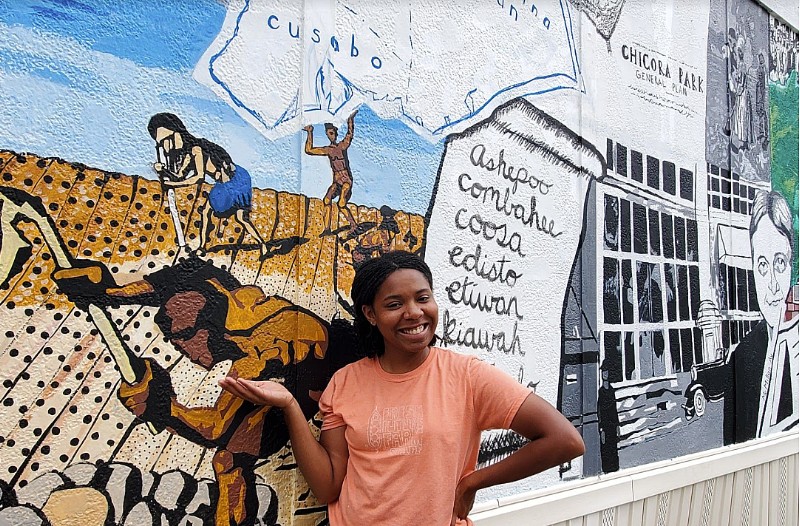




 We Can Do Better, South Carolina!
We Can Do Better, South Carolina!
























